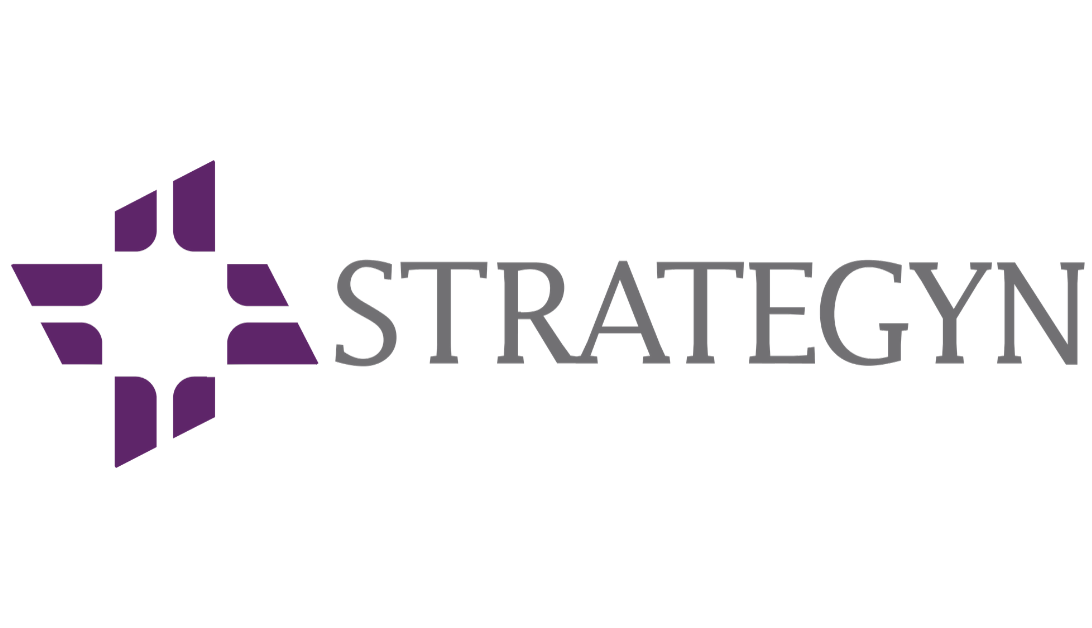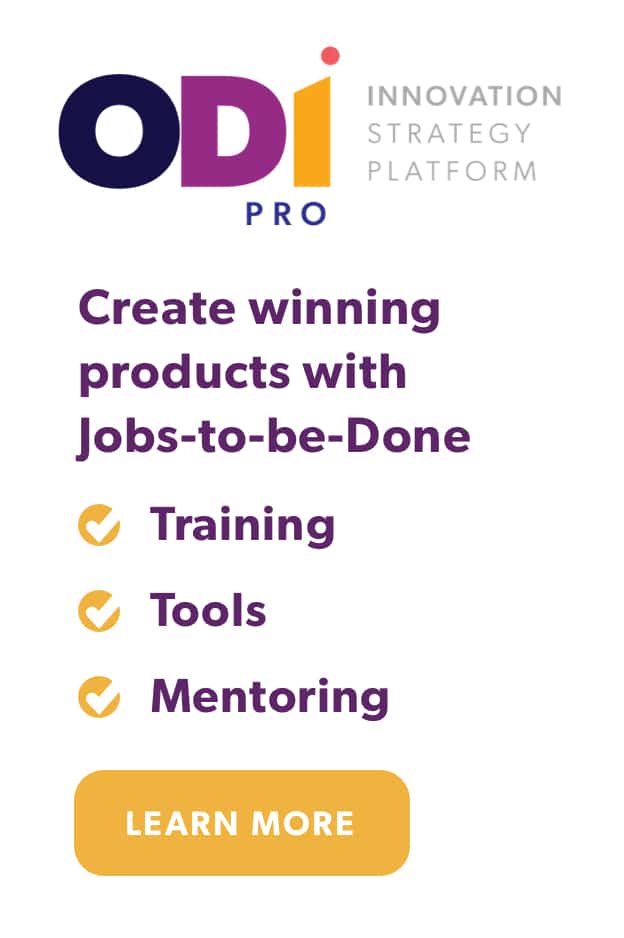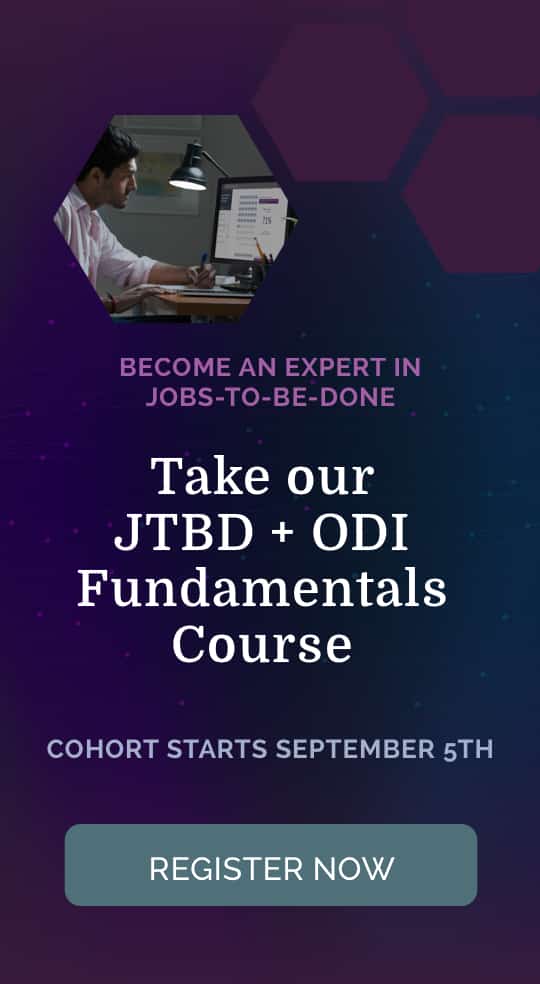Introduction
As a product leader, you are responsible for driving company growth and shareholder value. This means you must be able to successfully identify and pursue growth opportunities beyond your established markets and product lines. Growing “beyond the core” enables you to diversify your organization’s revenue streams, hit revenue growth goals, and create a sustainable competitive advantage.
Failing to expand beyond your core markets can result in stagnating growth and a decline in company value.
The Challenge
Venturing into new, unfamiliar markets can be daunting and risky. Worse yet, the investments made in new markets may not produce new revenue streams for years to come. This poses a dilemma for CEOs.
According to Harvard, the average CEO tenure is 4.8 years, meaning there’s immense pressure to deliver results quickly. Consequently, many CEOs are hesitant to fully support beyond-the-core initiatives, preferring instead to allocate resources to “safer” demand-generation activities like sales and marketing.
So what do you have to do as a product leader to gain CEO support? You must be able to prove that your recommended beyond-the-core value creation efforts will pay off within a reasonable timeframe, and that success can be achieved with minimal risk of failure.
We’ve created a market strategy framework that will help you achieve these growing beyond-the-core goals–and put you on the most efficient path to growth.
The Framework
The key to gaining support for beyond-the-core growth initiatives lies in Jobs-to-be-Done Theory–the notion that people buy products and services to get a “job” done. This theory can be used to reframe how you define your core markets and consequently, how you define adjacent and new markets, giving you new insights into the best growth opportunities beyond the core.
According to Jobs-to-be-Done Theory, a core market is defined as a group of people and the “job” they are trying to get done. “Parents,” for example, who are trying to “pass on life lessons to children,” constitute a market. Core markets defined in this manner are stable over time, as they are solution independent and make solid targets for value creation.
In contrast, most companies define markets around a product category, a technology, or some other solution-orientated categorization scheme. Markets defined in this manner go away when new products come along. They offer a poor foundation around which to identify adjacent markets.
By defining your core, adjacent and new markets through a Jobs-to-be-Done lens, you can more easily discover opportunities that leverage your capabilities and offer you a greater chance of success.
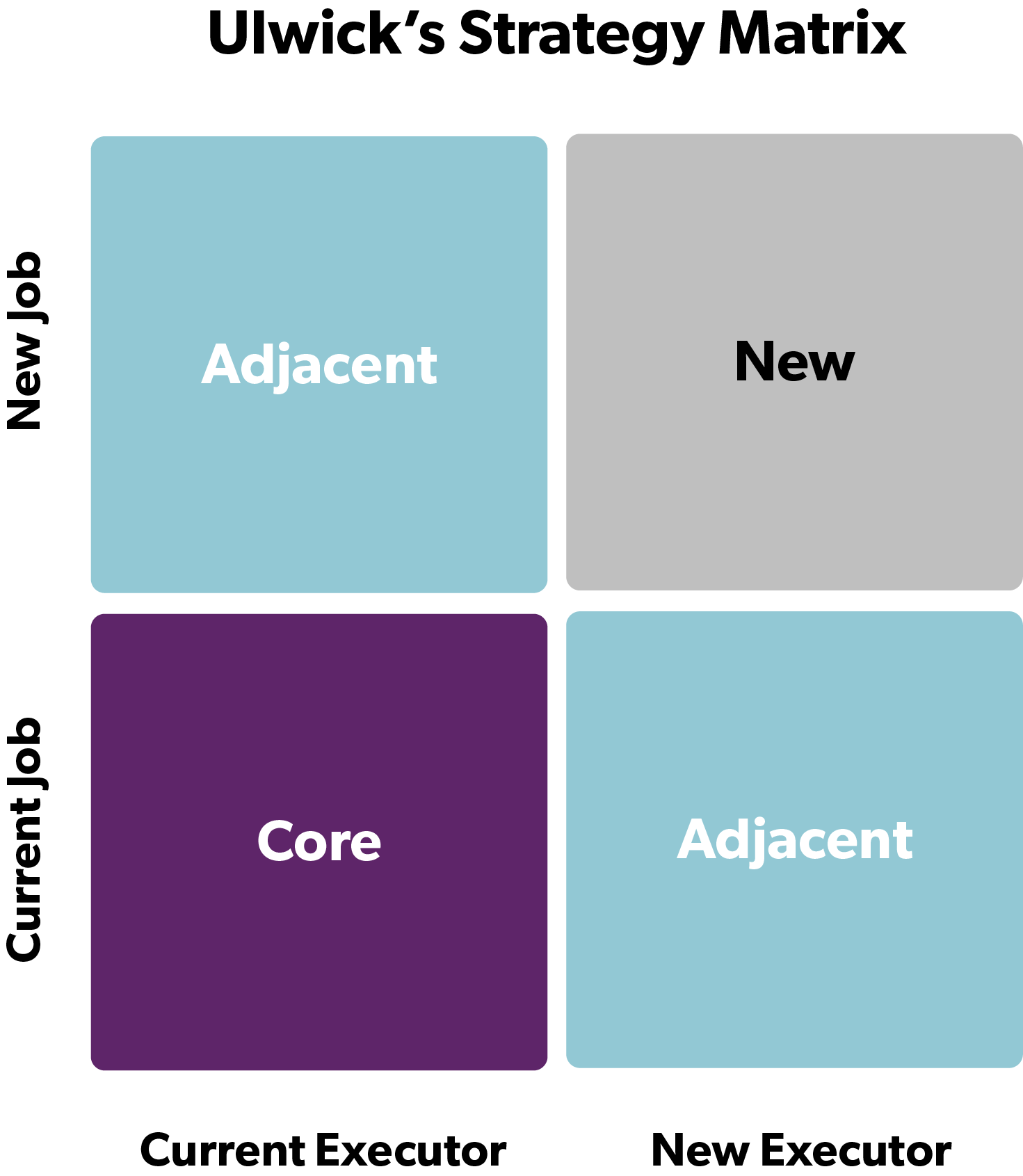
The 4 market strategy options are shown in Ulwick’s Strategy Matrix ( Figure 1).
The logic of this framework makes it easier to gain stakeholder approval for your investments and overcome the CEO’s reluctance to support initiatives that extend beyond the core business.
As we work through this matrix, we’ll explore these 4 options for growing beyond the core:
- Redefine and grow in your existing core markets
- Identify adjacent jobs-to-be-done: additional jobs for the same executor (customer)
- Identify adjacent customers: new executors (customers) for the same core job
- Consider entirely new markets; new jobs and executors
Option 1: Redefine and grow in your existing core markets

The first option is to redefine your core market around the entire job-to-be-done, not just the part your product currently addresses, and look for opportunities to get more of the job done.
Remember, a market is a group of people trying to get a job done, not a product category. Most existing products and services only fulfill a portion of the job. By defining the market through the lens of the customer, you can uncover opportunities to get more of the job done and grow within your newly defined core market.
This allows you to pursue natural growth by expanding your footprint in a market where you have an established presence, so you’re not investing in a completely new space.
Case Example: Melissa Nelson, Director of Portfolio Marketing at Philips, wanted a more thorough understanding of the core job that was targeted by their acute care patient monitoring solutions. Using the Jobs-to-be-Done approach, Philips realized that customers defined their job-to-be-done more broadly than the job their current products targeted.
The insights provided Philips with a clear roadmap for how their various solutions could work together to solve a larger job-to-be-done, positioning them to grow in their core market by getting more of the job done with a portfolio of products. Full Philips case study.
Option 2: Identify adjacent jobs-to-be-done

The second option is to identify adjacent opportunities by looking for opportunities to help your current job executors (current customers) get new jobs done. This is an adjacent market because while the job is changing, you’re still serving the same customers with whom you already have a relationship.
When looking for adjacent markets, consider jobs your customers are trying to get done before, during, or after the core job you’re currently helping them address. Expanding into these adjacent markets allows you to leverage existing customer relationships to drive growth. This provides a straightforward financial justification to leadership as you’re already talking to and selling these customers’ products or services. By identifying additional jobs they need to get done, you can expand your offerings and drive revenue growth without the cost and effort of acquiring a completely new customer base.
Case Example: Microsoft wanted to add value to its Software Assurance offering. Using this approach, they gained a better understanding of the job’s customers were trying to get done in managing software licenses.
Microsoft then discovered solutions to help customers address these new jobs and packaged them into the Software Assurance offering. By taking a job-based view to identify adjacent opportunities, Microsoft doubled year-over-year revenue and increased annual renewal rates while leveraging its existing customer relationships. Full Microsoft Case Study.
Option 3: Identify adjacent customers
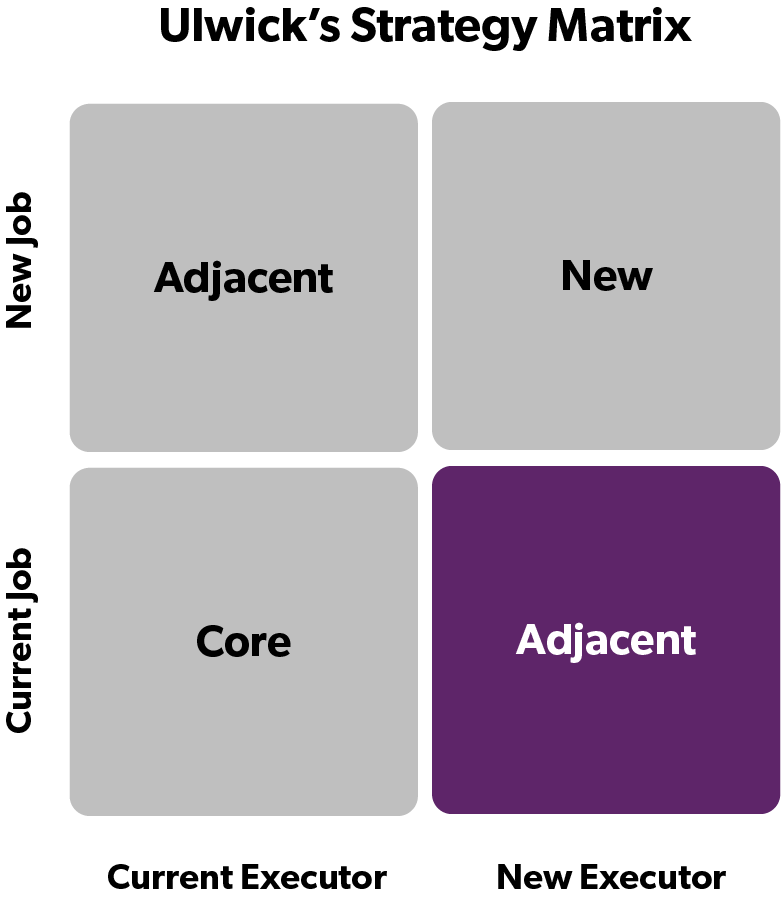
The third option is to identify new customers (job executors) who are trying to get the same core job done as your existing customers in your core market. In this type of adjacent market the job remains constant, but you’re targeting a different group of people.
This approach allows you to apply your existing technology and solution to a new adjacent market, adapting it as needed to suit the specific needs of the new job executors.
While tailoring your offering may incur some additional cost, leveraging your core capabilities mitigates the risk and investment required compared to entering an entirely unfamiliar space.
Case Example: A dental company that provides products to help dentists whiten teeth could explore opportunities to help consumers whiten their own teeth at home.
By focusing on the job of whitening teeth, the company can leverage its existing technology and expertise to target a new customer segment. While some adaptations may be necessary to suit the needs of at-home users, the core job remains the same, allowing the company to expand into an adjacent market while mitigating risk.
Option 4: Consider entirely new markets
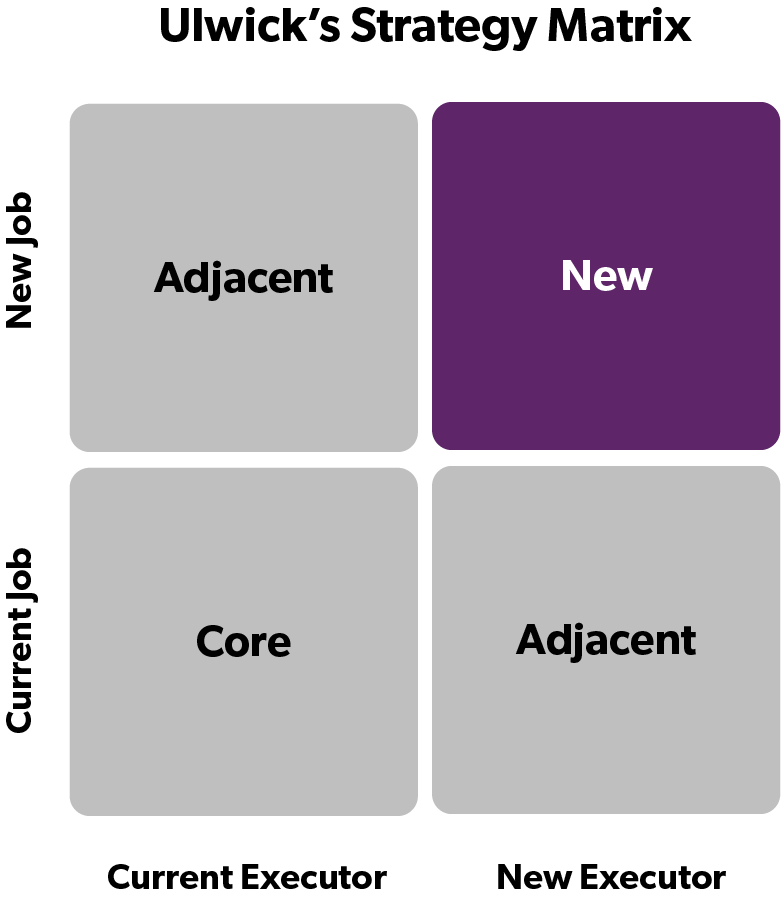
The fourth option, which should be reserved as a later-stage growth strategy, is to consider entering entirely new markets by targeting new job executors trying to get new jobs done.
In this scenario, you may lack existing customer relationships and a ready technology to get the new job done, making it the riskiest path to growth. Entering a market where you don’t have customer knowledge or technical capabilities should be the final stage of your beyond-the-core growth strategy, as the potential upside may be significant, but so are the challenges.
Case Example: Kroll Ontrack, a company specializing in data recovery and management, created an electronic evidence discovery solution for the legal industry, a market in which it had not previously competed.
By focusing on the job of finding information that supported or refuted a legal case, Kroll was able to develop groundbreaking solutions that disrupted the established market and grew revenue to $200M.
Despite the higher risk of entering a new market with new job executors and a new job-to-be-done, the insights gained from understanding the customer’s job gave Kroll the confidence to devise solutions that got the job done significantly better, propelling them to market leadership.
This illustrates the potential rewards of pursuing entirely new markets but also highlights the importance of thoroughly understanding the job-to-be-done before making such a move. Full Kroll case study.
Conclusion
As a product leader, framing your beyond-the-core initiatives around the customer’s job-to-be-done is the key to winning internal support. Anchoring your growth strategy to a framework that best explains your growth opportunity in core and adjacent markets instead of products creates a clear roadmap that leadership can confidently support.
By taking a disciplined Jobs-to-be-Done approach, you can pursue opportunities beyond the core to create meaningful value for customers and propel growth for your organization.
Learn more about Jobs-to-be-Done
By framing your growth strategy around your core market and methodically expanding into adjacent opportunities, you can build a compelling business case for beyond-the-core initiatives. Anchoring your approach in Jobs-to-be-Done Theory and leveraging Outcome-Driven Innovation to uncover and prioritize unmet customer needs is the key to mitigating risk, uncovering hidden opportunities, and gaining stakeholder support.
To learn more about how Jobs-to-be-Done thinking can help you drive growth and innovation in your organization, I invite you to explore the resources in our resource center. Embracing this approach will equip you with a powerful framework for customer-centric growth.
